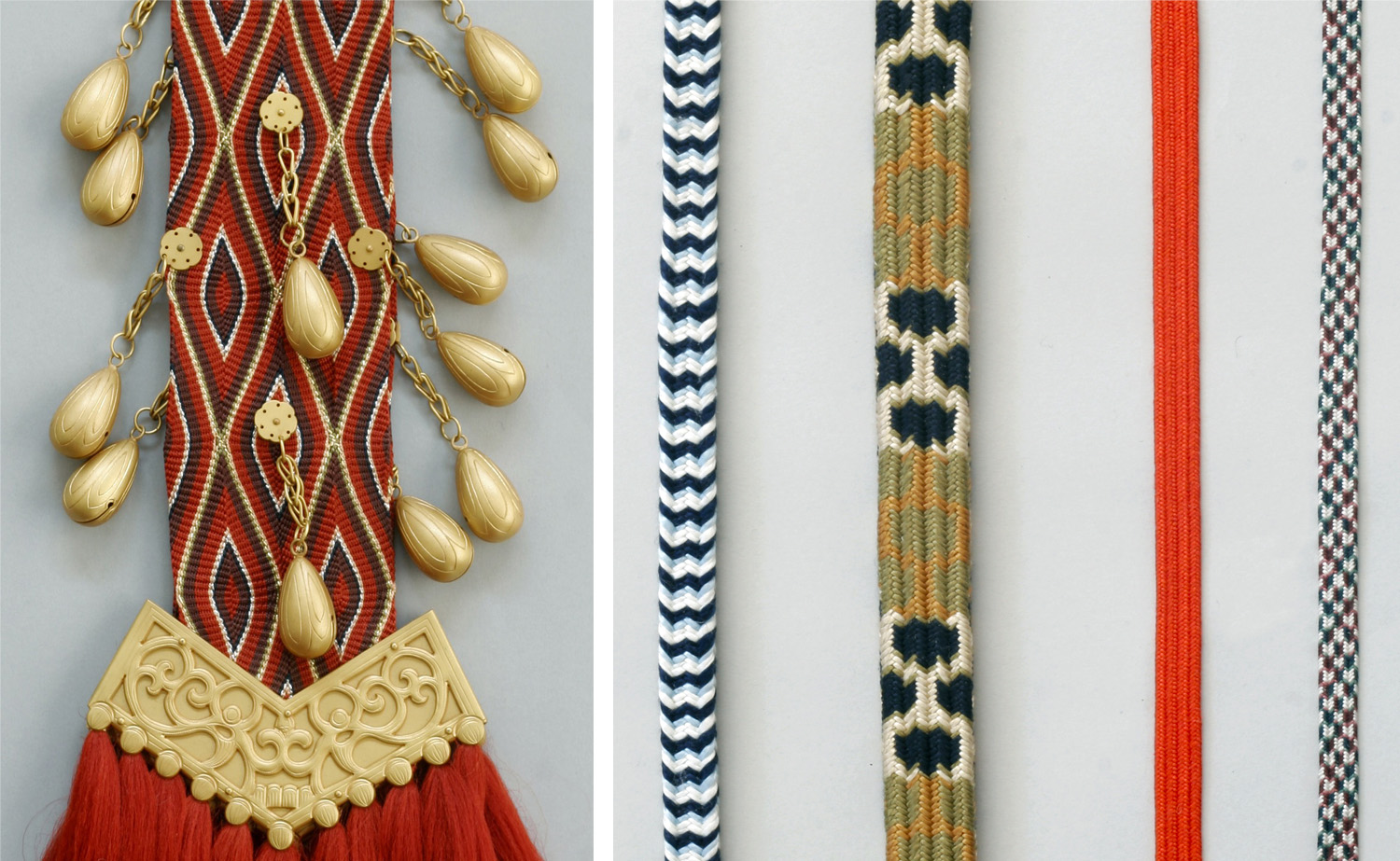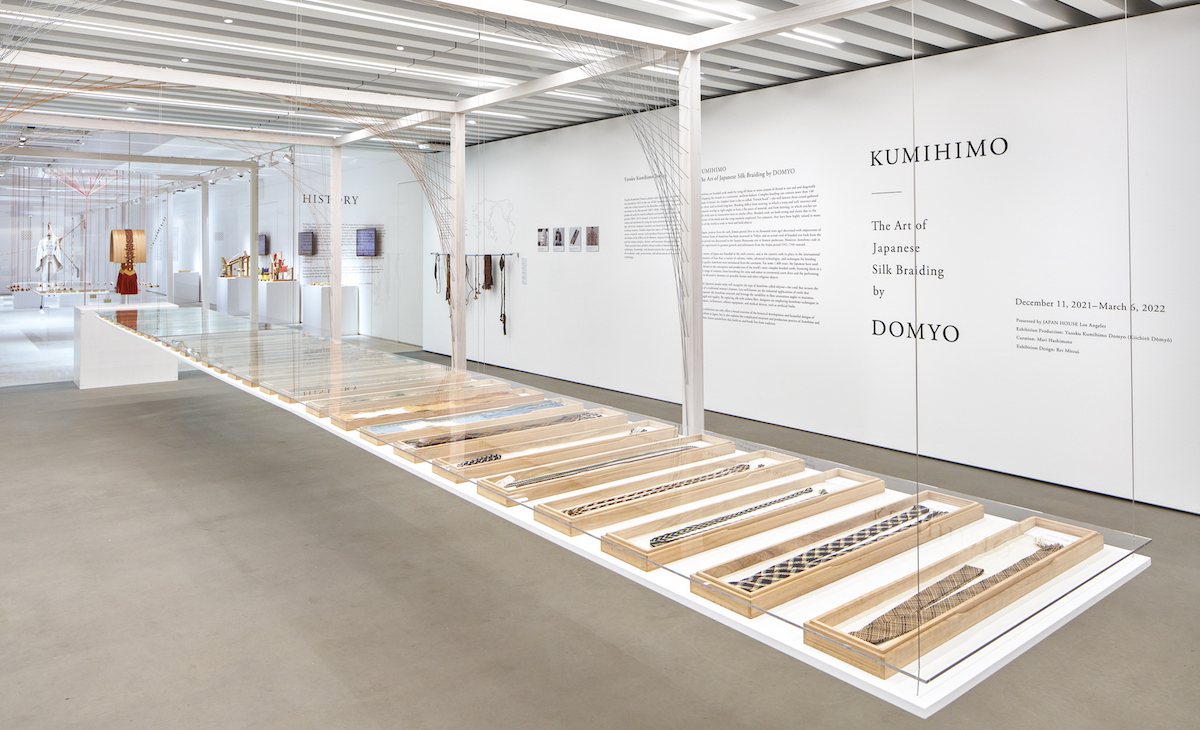
Part 1 | The History of Kumihimo in Japan
The first section of the exhibition presents a historical overview of braiding in Japan. It includes information about the earliest evidence of simple braiding from ancient Japanese burial sites dating to the early Jōmon period, about five to six thousand years ago. Around the sixth century, complex braiding techniques and silk threads were introduced to Japan from the Asian continent. On display are replicas of silk braids from the Nara period (710–794) preserved in the Shōsōin imperial repository and the Hōryūji Buddhist temple in Nara. During the Heian period (794–1185), braiding techniques became more elaborate and silk-dyeing techniques advanced, ushering in a golden age of kumihimo. This section also includes reproductions of braided silk cords that were used by noblemen to hold the scabbards of their longswords and to tie handscrolls.

Right: Replica of beaded sash from Hōryūji Buddhist temple, Nara period, Left: Replicas of cords for hanging swords and binding hilts, Kamakura period
In the Kamakura period (1185–1333), many new styles and techniques emerged to meet the needs of the powerful warrior classes—from wrapping sword handles to tying together the lacquered metal plates of samurai armor. Though the production of kumihimo declined during the fifteenth and sixteenth centuries, it flourished again during the Edo period (1603–1868) as braids for carrying and wrapping the scabbards of swords, which at the time were mostly worn as status symbols and for ceremonies. In addition, silk cords became prominent elements of the kimono ensembles worn by women of different social classes. Decorative bands called obijime were tied over the obi to tighten it, and similar cords were used to suspend objects such as medicine containers, tobacco pouches, and portable writing sets from the obi.
Many new kumihimo braiding styles and patterns arose in response to the growing demand in thriving urban centers. On display are examples of these diversely patterned cords featured both in ceremonial sword furniture and in clothing. In the Meiji period (1868–1912), swords were prohibited and kumihimo production shifted primarily to obijime worn with kimonos. However, as kimonos were replaced by Western clothing, the market for these braided silk cords declined.
A handout on the History of Kumihimo in Japan is available for download.


